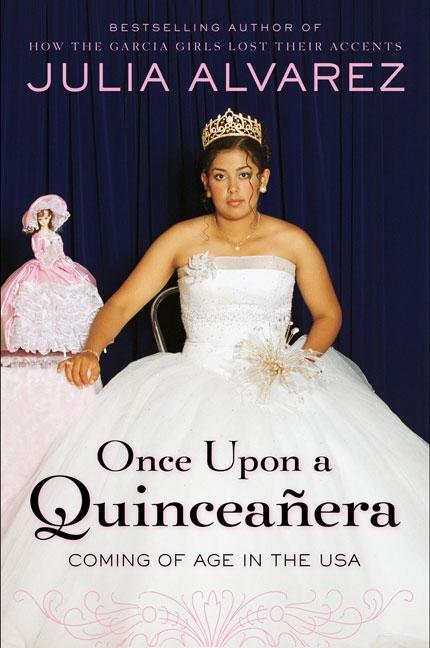Book Description
for Once Upon a Quinceañera by Julia Alvarez
From the Publisher
The bestselling author of How the García Girls Lost Their Accentsexplores the phenomenon of the Latina “sweet fifteen” celebration
The quinceañera, the fifteenth birthday celebration for a Latina girl, is quickly becoming an American event. This legendary party is a sight to behold: lavish ball gowns, extravagant catered meals, DJs, limousines, and multi-tiered cakes. The must haves for a “quince” are becoming as numerous and costly as a prom or wedding. And yet, this elaborate ritual also hearkens back to traditions from native countries and communities, offering young Latinas a chance to connect with their heritage.
In Once Upon a Quinceañera, Julia Alvarez explores this celebration that brings a Latina girl into womanhood. She attends the quince of a young woman named “Monica” who lives in Queens, and witnesses the commotion, confusion, and potential for disaster that comes with planning this important event. Alvarez also weaves in interviews with other quince girls, her own memories of coming of age as an immigrant, and the history of the custom itself—how it originated and what has changed as Latinas become accustomed to a supersize American culture. Once Upon a Quinceañerais an enlightening, accessible, and entertaining portrait of contemporary Latino culture as well as a critical look at the rituals of coming of age and the economic and social consequences of the quince parties. Julia Alvarez’s dedicated fans will be eager to hear her thoughts on this topic. It is a great book for anyone interested in American youth today—parents, teachers, and teenagers themselves.
The quinceañera, the fifteenth birthday celebration for a Latina girl, is quickly becoming an American event. This legendary party is a sight to behold: lavish ball gowns, extravagant catered meals, DJs, limousines, and multi-tiered cakes. The must haves for a “quince” are becoming as numerous and costly as a prom or wedding. And yet, this elaborate ritual also hearkens back to traditions from native countries and communities, offering young Latinas a chance to connect with their heritage.
In Once Upon a Quinceañera, Julia Alvarez explores this celebration that brings a Latina girl into womanhood. She attends the quince of a young woman named “Monica” who lives in Queens, and witnesses the commotion, confusion, and potential for disaster that comes with planning this important event. Alvarez also weaves in interviews with other quince girls, her own memories of coming of age as an immigrant, and the history of the custom itself—how it originated and what has changed as Latinas become accustomed to a supersize American culture. Once Upon a Quinceañerais an enlightening, accessible, and entertaining portrait of contemporary Latino culture as well as a critical look at the rituals of coming of age and the economic and social consequences of the quince parties. Julia Alvarez’s dedicated fans will be eager to hear her thoughts on this topic. It is a great book for anyone interested in American youth today—parents, teachers, and teenagers themselves.
Publisher description retrieved from Google Books.


